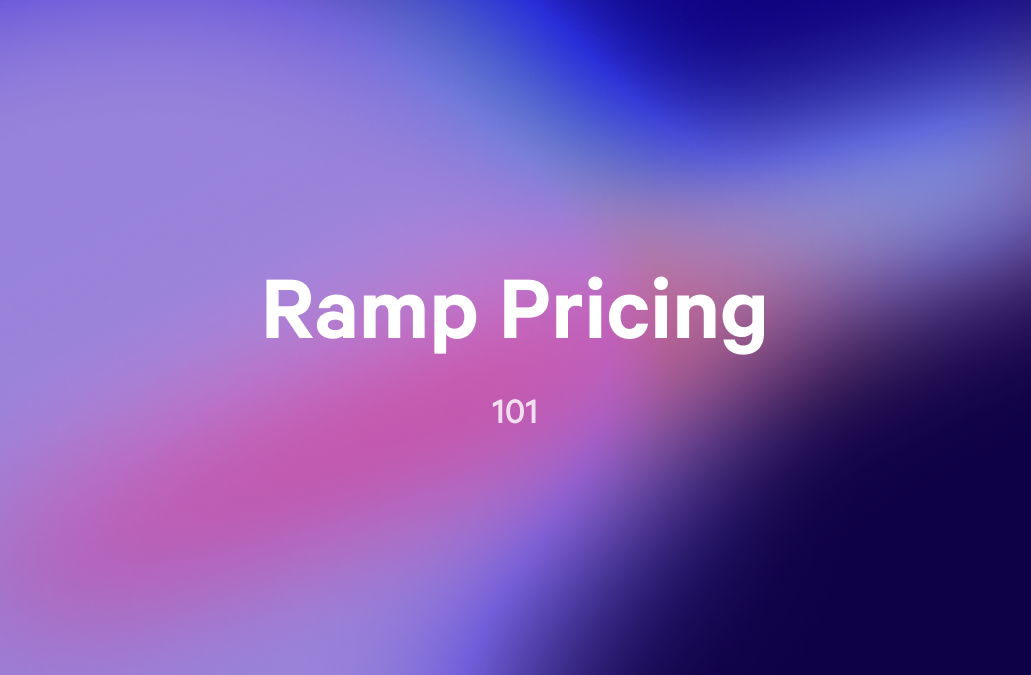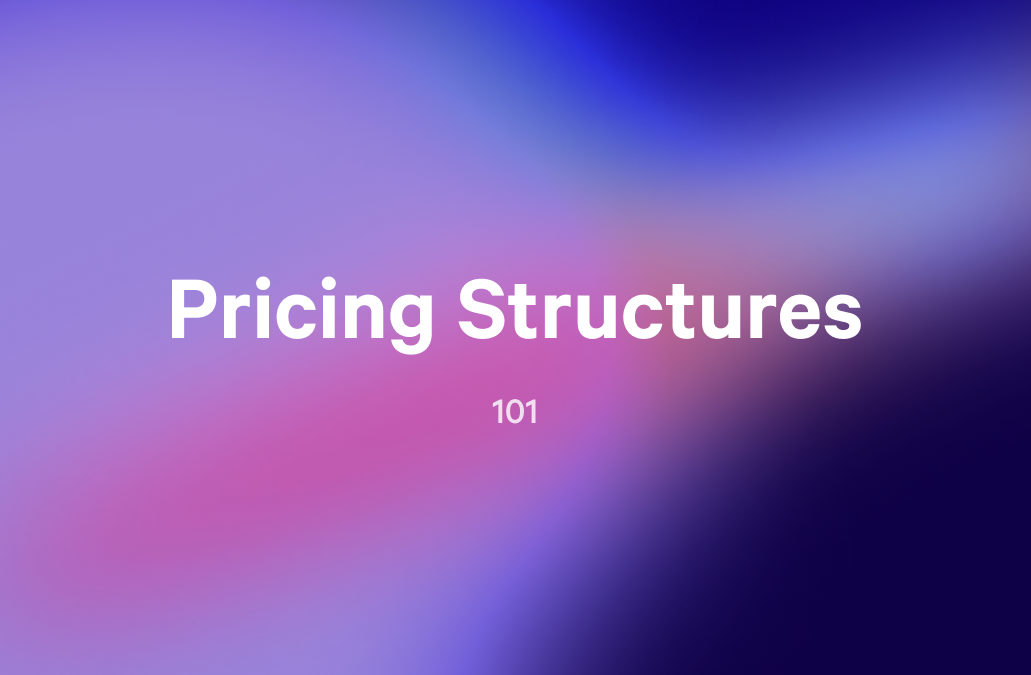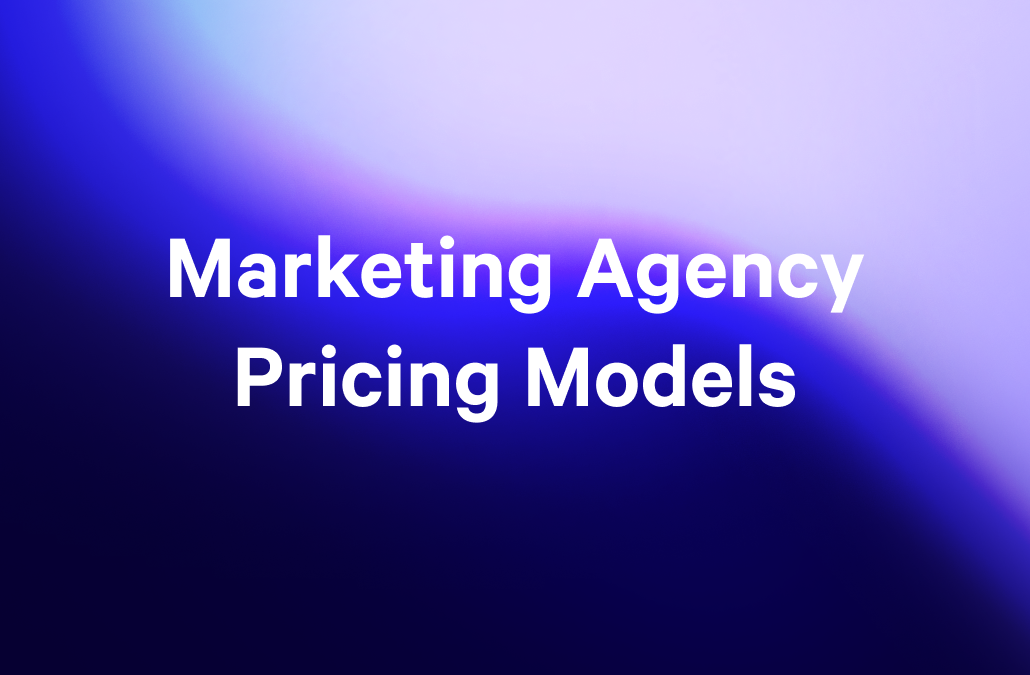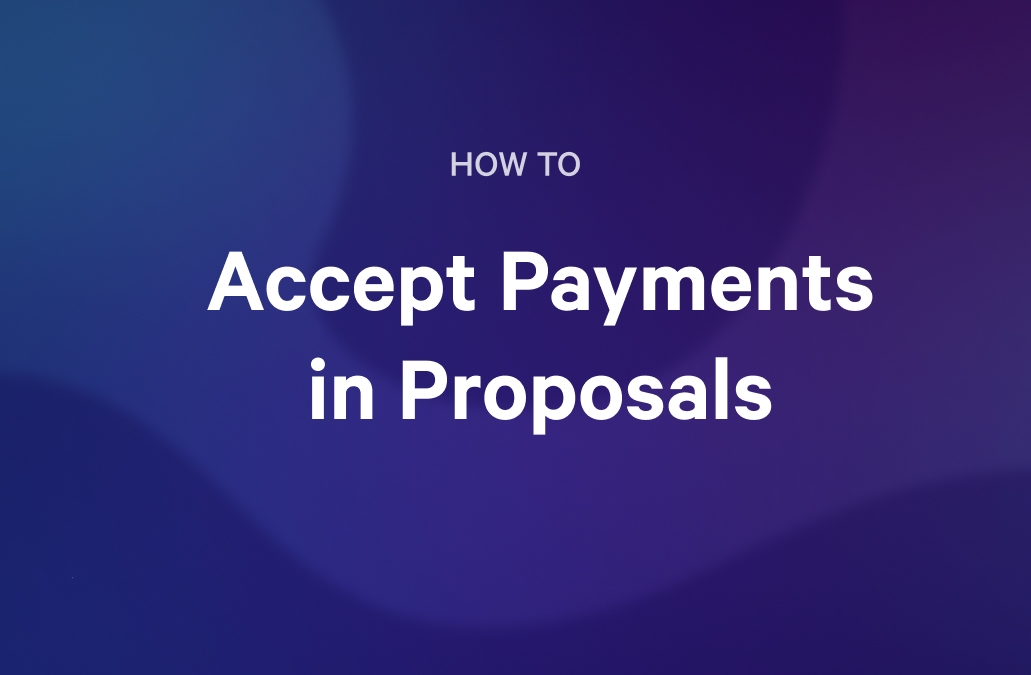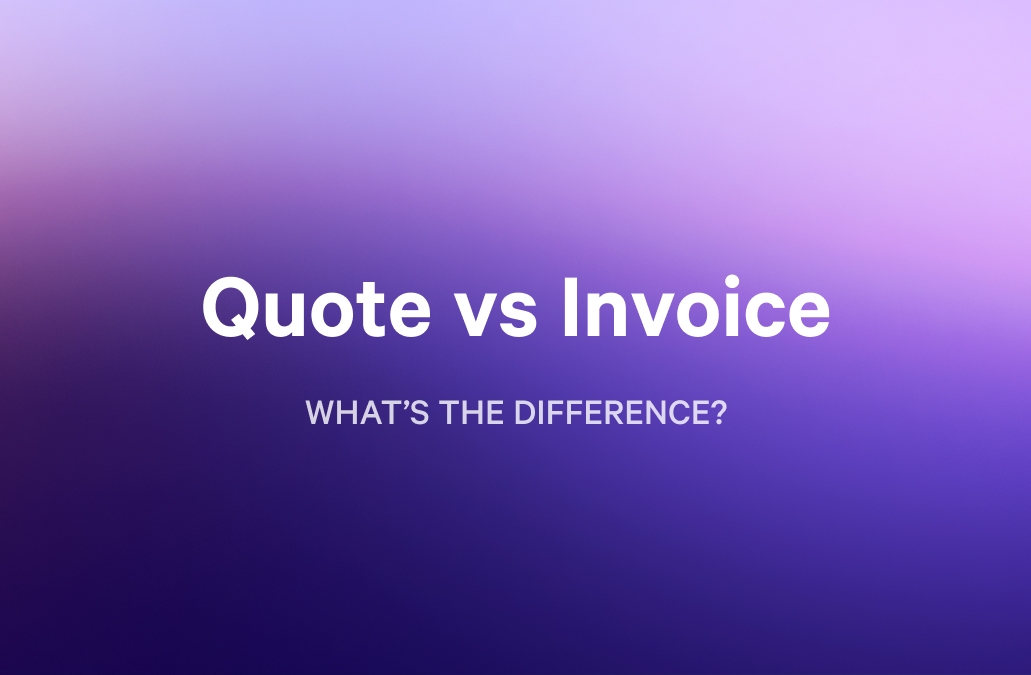You’ve got the client excited about working with you. You’ve sold them on your products or services. Now, you just have to close the deal.
The last thing you want is to lose a client because you a) didn’t ask for the business or b) didn’t offer a clear pricing proposal.
And then someone beats you to the punch.
You can avoid this exact scenario almost every time by simply creating a winning pricing proposal to engage your client and seal the deal.
Key Takeaways
- A pricing proposal outlines a timeline, scope of work, and price models for a prospective client considering working with you.
- Writing a winning pricing proposal to close the deal is essential, as this is usually the final step.
- A winning pricing proposal includes interactive elements and maintains a professional appearance like the templates offered by Qwilr.
What is a pricing proposal?
A pricing proposal outlines the cost for the work you will provide while revealing the value of that work. In short, it is a strategic sales tool if done correctly. You’re selling the client on why your work is worth your prices.
A pricing proposal is one of the final steps in closing a contract agreement with a prospective client. By this point, you’ve had many conversations about what you have to offer, and the client is excited to work with you. Now, it comes down to the numbers game.
This doesn’t mean that you want to come in with the lowest prices. Rather, a pricing proposal should be a transparent breakdown of costs associated with your product or service.
Types of pricing models
There are several different types of pricing proposals, and each one is effective for different purposes. The key is to identify the prospective client’s needs, the scope of the project or work you’ll be doing, and the value of your offering. Combine those factors to create the best pricing model.
Agile pricing
The agile pricing approach allows you to break a project into segments and have the client pay for each “sprint” in advance. When you break up a project, you have two beneficial side effects:
- your staff has more manageable tasks before them instead of a single, looming project
- your client is excited by each segment you complete and eager to pay for the next one
Hourly or daily pricing
For longer-term projects, hourly or daily pricing might be the best strategy. This allows you to keep your staff paid for their work while your client pays you. You bill hours for the hours of work you put in or at a daily rate, and the client can pay you at the end of a time period—once a week, biweekly, or once a month.
Retainer
Many companies like to work on a retainer when their clients need regular, ongoing work.
For example, a marketing company may agree to provide a certain amount of content each month for an agreed-upon monthly or annual retainer. Then, if the client needs anything above and beyond that agreed-upon content, they can pay for that using a different pricing model.
In this scenario, the client typically pays you once a month, at the beginning of the month, for the duration of the contract, which is usually a year.
Read next: Marketing Agency Pricing Models
Value-based pricing
Value-based pricing is a pricing strategy where the price of a product or service is determined based on the perceived value it delivers to customers rather than on production costs or market averages.
This method focuses on understanding what the customer values most and aligns the price with the benefits and outcomes they derive. It often involves market research, customer feedback, and competitive analysis to gauge willingness to pay.
An example would be a SaaS company charging more than its competitors based on the value that the extra features are perceived to provide.
What to include in a pricing proposal
Pricing proposals are pretty straightforward and must include the following sections:
Executive summary
Don’t make the client wait. The first step in your pricing proposal should be your executive summary, which tells the client in advance what they can expect from this proposal, what kind of work you’ll be doing, the timeline, and the pricing.
Scope of work
Next, you’ll get into the nitty-gritty details. Lay out the project with clear and precise parameters. Show your client exactly what you’ll be doing for them. This is a great place to reflect on past projects you’ve completed for other clients to get this client excited about what can happen to them.
In this section, you should be very specific about deliverables and timelines.
Pricing details
Now that you’ve got your client thrilled to work with you, name your price.
Present your pricing structure in a way that is completely transparent and communicates value. Break down each phase, deliverable, or time allocation with the associated cost. This not only ensures clarity but helps to communicate how value is tied to pricing.
With Qwilr’s proposals, you can include interactive pricing tables that break down price structures and provide bundling options for your clients to choose from.
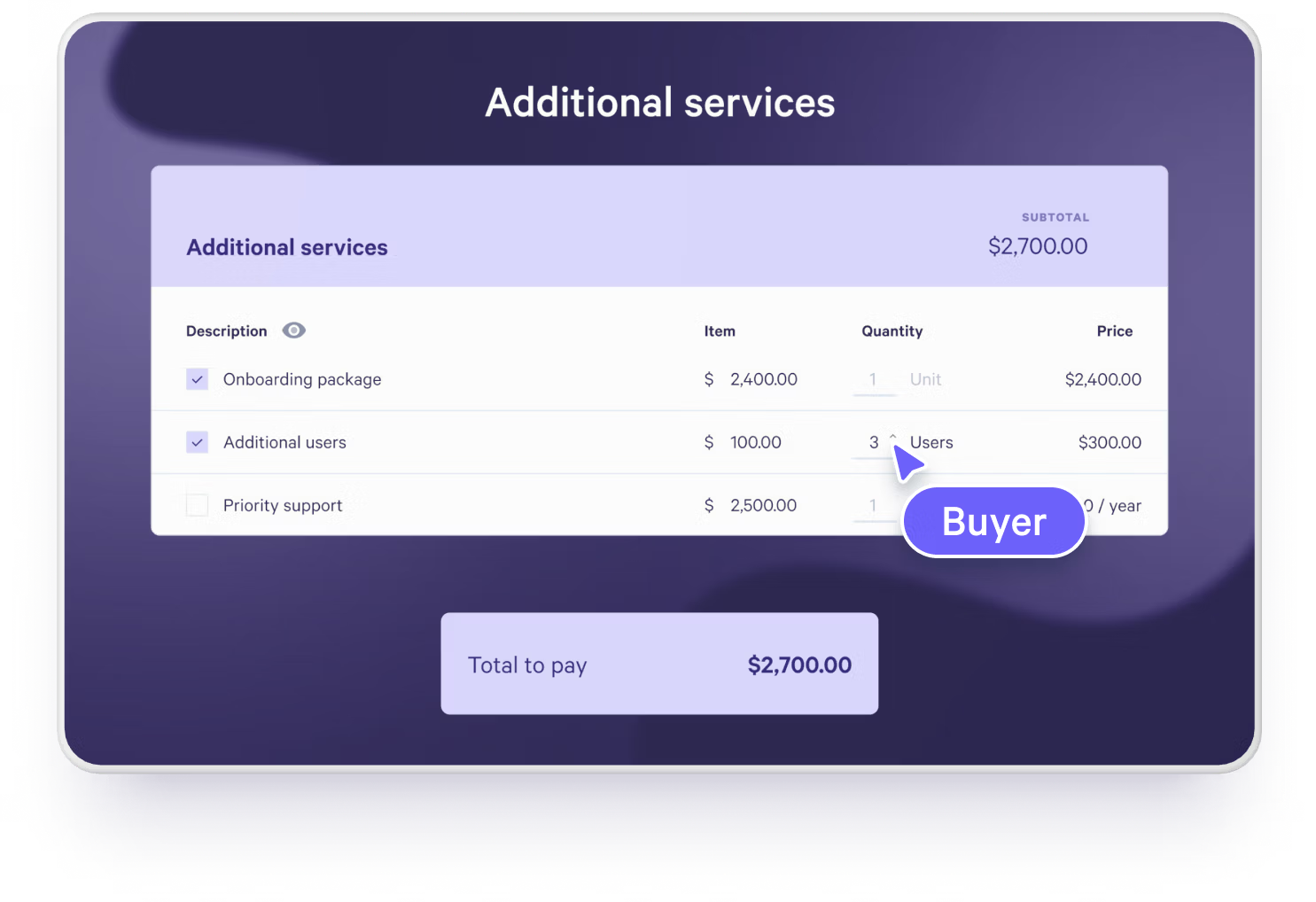
Value proposition
What can your client expect to gain from working with you? What is the expected return on investment?
This is a great opportunity to use an ROI calculator like the one offered by Qwilr to show the client exactly what they’ll be getting for their money. With an ROI calculator, you let the client know that working with you is an investment in their own business, and you’re their partner, here to help.
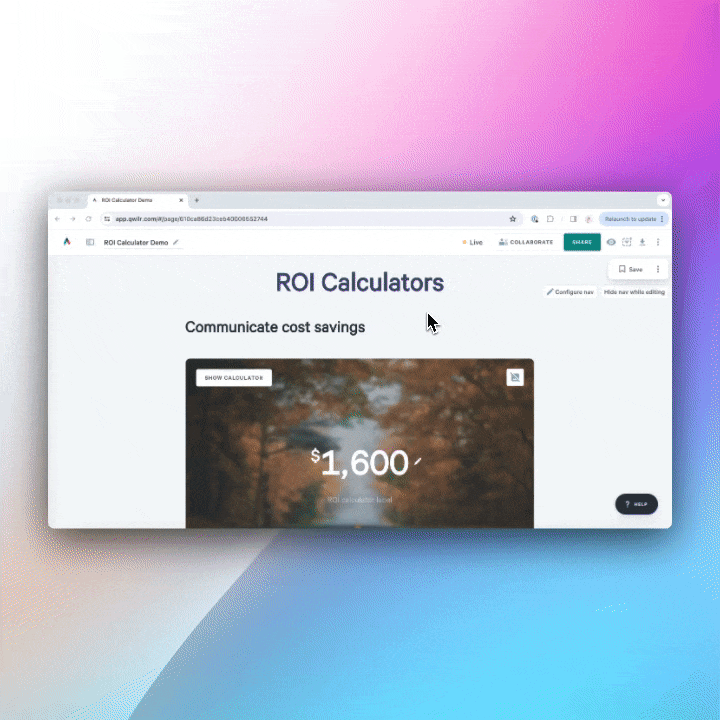
Terms and conditions
Next, offer the client terms and conditions that make sense to both of you. This section will include:
- Your timeline
- Under what conditions do you expect to be paid
- On what specific dates payment is required
- What types of breaches could warrant a termination of the agreement
Call to action
Finally, you’ll have a section where your client can agree to your price and your terms and “sign on the dotted line.”
Qwilr offers an integrated e-signature option that is both legally binding and secure. What’s more, once clients have accepted and signed the pricing proposal, they can make payments directly through the web-based document with payment software, QwilrPay. This feature gives buyers the option to make instant payments however they want—credit card, direct debit, or bank transfer—and allows for part and full payments as per your pricing strategy.
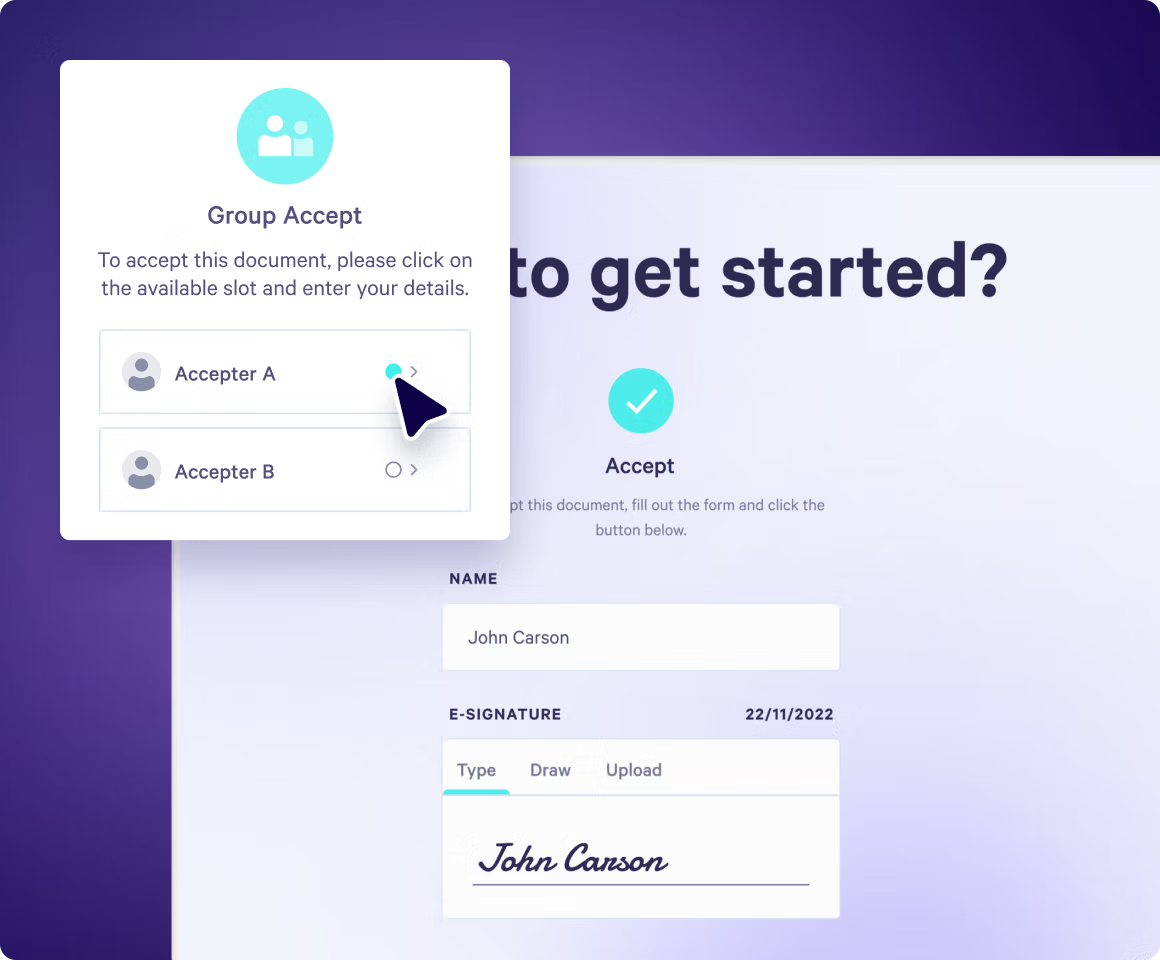
Want a video walkthrough on how to nail your business proposals? We've got you covered:
Pricing proposal template
Why start from scratch when you can use Qwilr's professional and interactive pricing proposal template?
Yes, it includes all of the essential components of a pricing proposal. Yes, it's fully customizable. But the best part? Dynamic quote blocks and interactive pricing tables give you the flexibility to display pricing models clearly while engaging your clients.
Display your pricing as a traditional quote or create packages using Qwilr’s pricing plan option. Qwilr’s lightweight CPQ ensures every quote is automated.
And there's more. Qwilr's templates come packed with:
- Analytics: Track how buyers engage with your proposal at every stage
- Built-in e-sign and payments: Integrate e-signatures and enable buyers to accept and pay all on one document
- Automation: Built the perfect template? Easily automate content creation and update CRM deals automatically.
How to create a pricing proposal
Once you figure out which pricing model you want to use, you’ll start drafting your pricing proposal. Here are the essential steps for getting the first draft of your proposal down:
Get a soft agreement first
You should not even be thinking about a pricing proposal if you don’t already have some level of buy-in from the client.
Just like you shouldn’t propose to someone if you haven’t at least discussed marriage and gotten some interest, you should not be presenting a pricing proposal to a client who has not expressed interest in your work.
Make sure you have a soft “yes” from the client that shows clear excitement about working with you. Then schedule the pricing proposal meeting and get to drafting.
Know your client
By now, you should know this client and their business inside and outside. You have done your research, you know their pain points, and you know how and why your products or services solve their problems.
If you don’t know your client yet, get to know them very well before you even think of drafting a pricing proposal. If you can’t speak directly to their struggles, you can’t ask them to pay you for your services.
Set a budget
One of the biggest parts of a pricing proposal is understanding your pricing.
- Why are you charging what you’re charging?
- Where do the costs come from?
- What does it cost to make the products?
- How much are your services worth?
Sit down with a budget sheet and write down every expense, your direct and indirect costs, and your profit margins. Then you’ll be able to accurately set rates for your project or service.
Have a pricing strategy
Once you have your budget in hand, you need to be able to create a pricing strategy for your client. Start drafting your goals for the project, what goes into the scope of the work you’ll be doing, how large your team is, what each team member will be doing, and so on. Then, tie that directly to the budget you created to come up with your final price for the project, hours, or retainer.
This is where smart quote software comes into play—enabling you to get accurate quotes into the hands of your buyers that are populated with CRM data.
Offer options
Your prospects want to feel as if they have some sort of control over the final cost. Provide clients with pricing options that are viable within the scope of work.
This may mean including extra services or features at a higher price, a quicker delivery, or a basic vs premium offering.
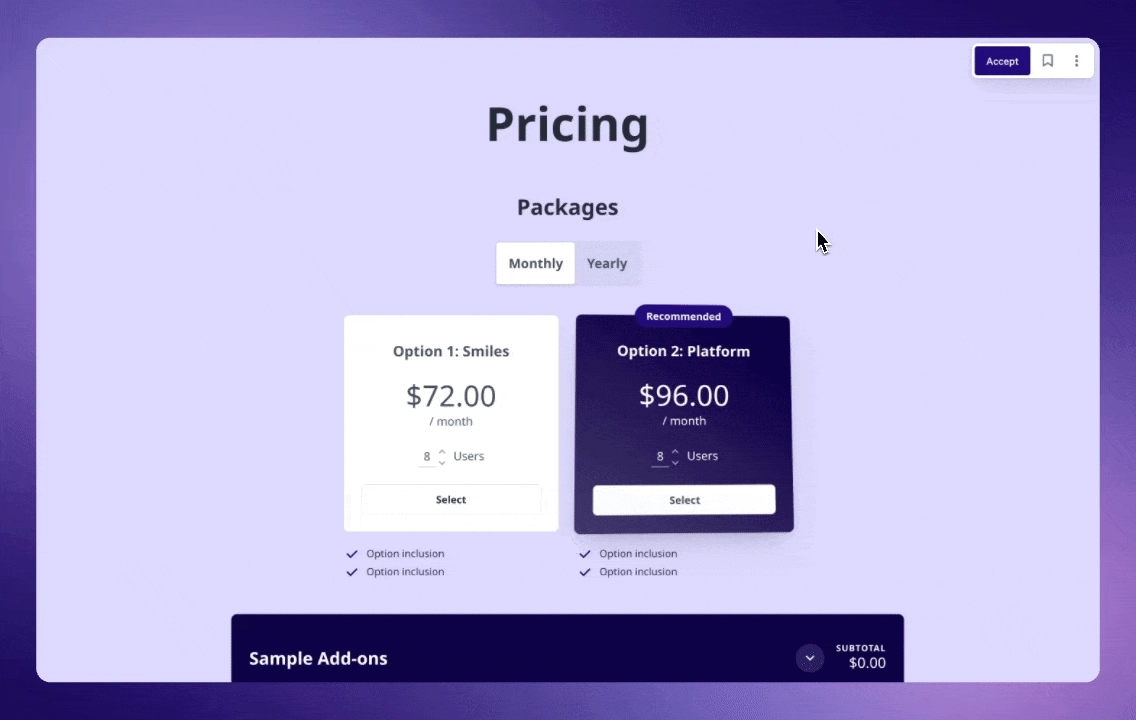
With Qwilr it's easy to display pricing options with interactive pricing tables and and integrated e-sign features
Set a completion date
Get realistic about how long this job is going to take you. If you’re drafting a pricing proposal for a retainer, then it’s simple. You’ll most likely have a one-year contract. But any other contract should include segments of the work, how long each segment will take, and a clear timeline of what your client can expect.
Use a template
Don’t try to create your pricing proposal on your own! There are far too many template options out there now for you to try to reinvent the wheel. Qwilr has a variety of proposal templates that allow you to work with various methodologies, timelines, agreements, and more, including an ROI calculator, so your prospective clients can see exactly what they’ll be getting in return for their payment.
Use persuasive language
Remember as you’re drafting your pricing proposal to use positive, persuasive language. This language can look like highlighting the benefits of working with you, the value of your services, and addressing concerns in a proactive manner. Use words like:
- expertise
- optimized solutions
- proven results
- guaranteed satisfaction
This language draws potential clients into your sales pitch and reflects the value of your price.
Be proactive about concerns
One important way to earn your client’s trust and show them the value of working with you is to be proactive about their concerns. As much as you’ve researched the client, you should also have studied their potential concerns. You know their pain points. In what ways will they push back?
Think of these points of conflict ahead of time and be prepared with answers. To really earn their trust, bring up those points before they can and address them with clear, confident reassurance.
Create irresistible pricing proposals with Qwilr
Ultimately, a pricing proposal is your last step to closing the deal with your prospective client. You’ll make it professional, clear, concise, and you’ll show your value.
Qwilr is an all-in-one sales solution to aid you every step of the way—from creating a winning proposal to signing the deal and collecting payment. Sign up for a free trial today to see what we’re all about.
About the author

Tania Clarke|Head of Product Marketing
Tania heads up product marketing at Qwilr – looking after positioning, sales enablement, competitor intelligence and more. Tania brings experience from former roles at high growth startups like Atlassian and Safety Culture.
